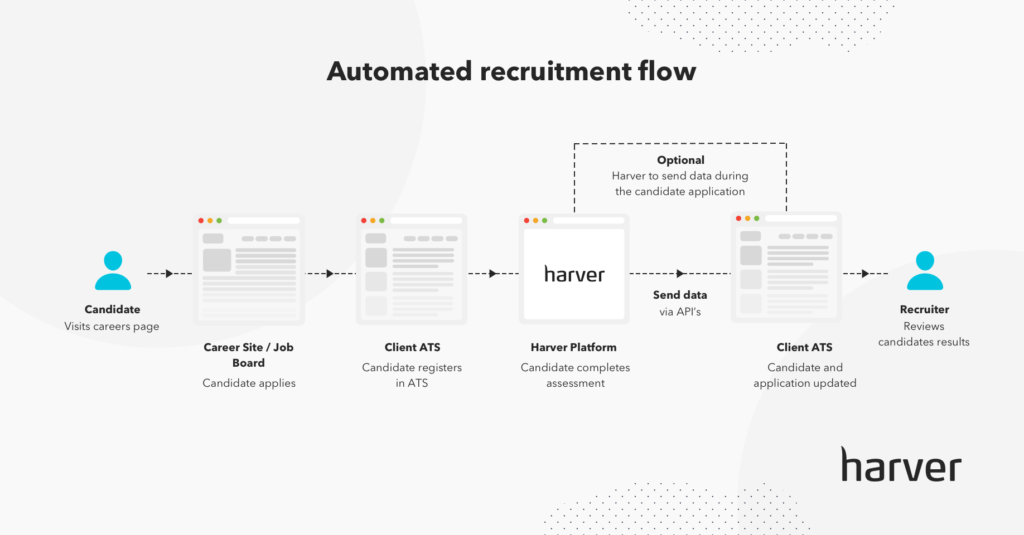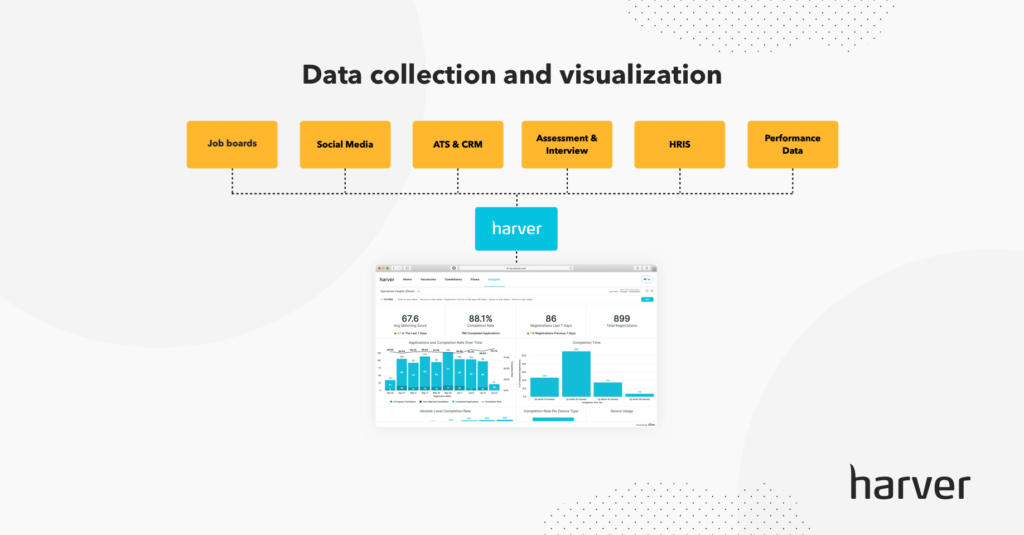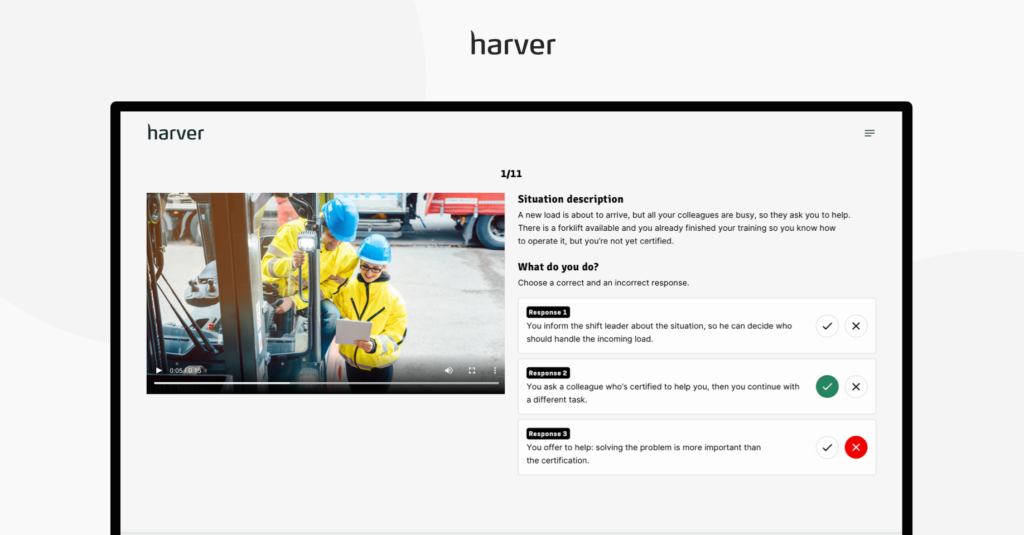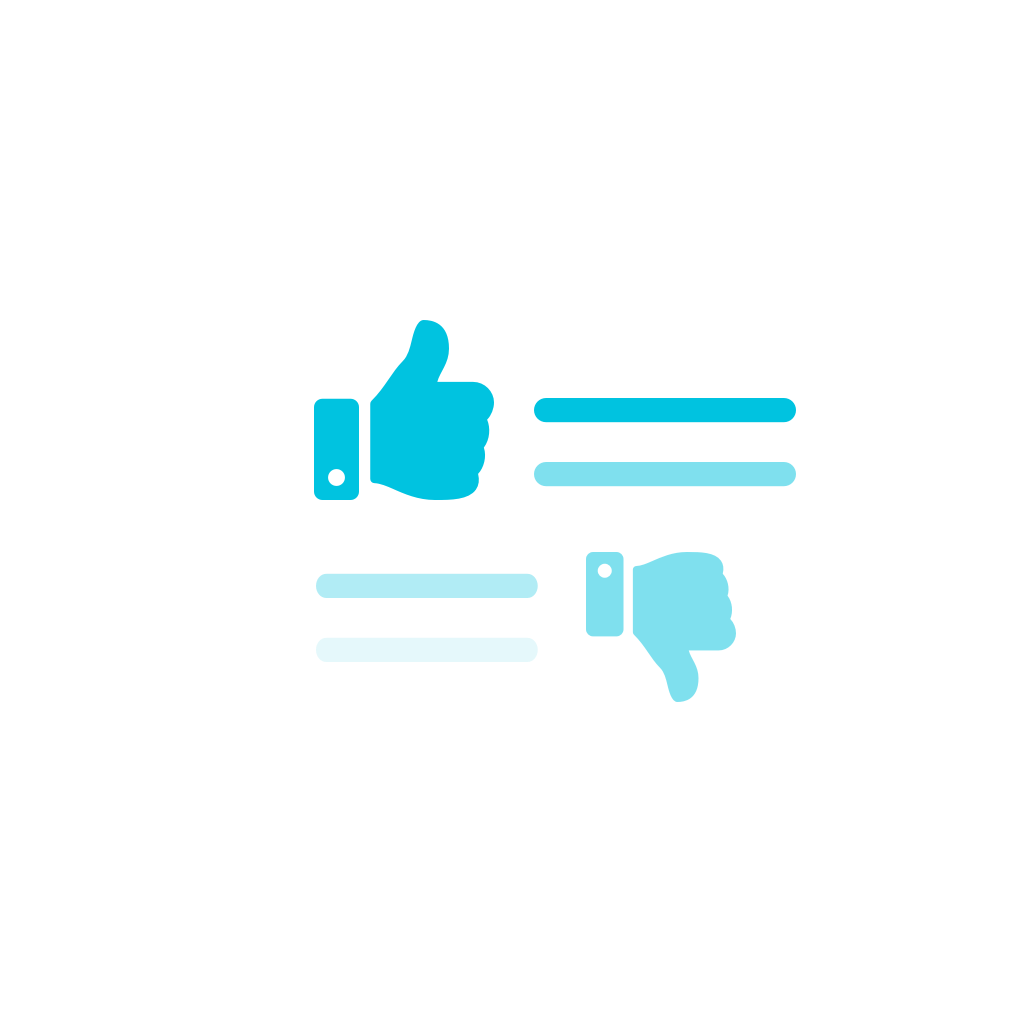Automating your recruitment processes has the power to radically transform the way you work. With technology playing an ever-growing role in the way we hire, automation helps move that process along as efficiently as possible.
But not all recruitment tools are created equal; in fact, most software on the market is designed for regular recruitment. If you’re in the volume hiring space, however, you have different needs and have to overcome very specific challenges. And if you’re trying to do mass hiring using tools built for regular recruitment, sooner or later you’ll start experiencing bottlenecks.
Thus, if you’re hiring high volumes of employees for low-complexity, entry-level jobs and want to improve your recruitment process, you need software that’s built for volume hiring and that fits your individual needs.
We’ll look at some software recommendations, including what they do and who they’re right for, in the next sections.
What's in?
End-to-end volume hiring software
The recruitment process involves many different steps, from candidate sourcing to onboarding. And while there are many software solutions that fit each stage of the hiring journey (and we’ll touch on a few of them), the truth is, if you’re using a mismatch of platforms, you’re likely to create a less-than-ideal experience for your candidates and your recruiting team.
When pieces of your recruitment process are operating in silos, information can get lost, strong candidates can fall through the cracks, and software designed to make your life easier can actually become more difficult.
For this reason, we always recommend an end-to-end volume hiring software solution like Harver. Our platform helps to streamline and automate the entire process from start to finish, leading to an enjoyable experience for candidates and an efficient process for talent teams.

Moreover, by mixing automation with talent matching technology, Harver helps recruiters take a data-driven approach to candidate selection and eliminates bias, leading to a fast and fair volume hiring process.
Our platform offers a library of scientifically validated pre-employment assessments which includes the types of assessments most likely to predict a top performer. The assessment solution is built for volume hiring and relies on two-way matching, giving both recruiters and candidates the chance to decide if there’s a fit, and reducing employee attrition by managing applicant expectations.
As part of the candidate experience component, Harver offers an interview auto-scheduling functionality that speeds up the recruitment process, offering applicants job security in less than 24 hours.

The integrated BI solution – which collects hundreds of data points across the entire recruitment tech stack – helps visualize the main hiring KPIs and optimize the sourcing, screening, and selection algorithms, leading to a higher quality of hire in the long run.

If you’d like to see Harver in action, you can book a demo below.
Ready to transform your hiring process?
Candidate sourcing software
While we all hope top-quality candidates are finding our open positions, the truth is that many times there are just too many job postings for talent to weed through. But manually finding those candidates and asking them to apply is too time-consuming for most recruiters.
With candidate sourcing software, you can automate the process of finding talent and encouraging them to apply. Here are two candidate sourcing software options to automate the process:
Talentis Global
Talentis Global is a candidate sourcing software that helps you find candidates beyond just LinkedIn. It sources passive candidates, looking for leads that best fit the open position. It also promises to streamline executive candidate sourcing.
Yello
Yello automates more than just your sourcing efforts. Not only does it help you find top talent, but it also engages with the candidate through built-in communication and activity tracking. Yello also has solution options beyond just candidate sourcing, including candidate engagement and evaluations. Yello is an enterprise solution.
Candidate screening software
After you’ve gotten candidates to apply, you need to discover who fits the qualifications. Like candidate sourcing, this is a time-consuming process that can be made easier with automation tools.
Here are two to consider:
Recruiterbox
Recruiterbox is a web-based candidate screening tool that allows you to create custom application forms that you can then use to filter candidates who best fit your open position. This prevents recruiters from needing to manually sift through dozens or even hundreds of applications. Recruiterbox does offer enterprise solutions.
Employa
Employa’s MatchScout solution uses the power of AI to create what they call Extended Candidate Profiles. These profiles contain information on candidates, including any red flags or other identifiers that the candidate might not be right for the job. This helps you easily see what candidates aren’t fit for your position.
Talent matching software
Sometimes when candidates apply for a job, they aren’t a great fit for that position, but they might be for another. If you redirect those candidates instead of letting them go completely, you create a better candidate experience and help ensure you don’t let any strong talent slip through your fingers. But to find those candidates, you need talent matching software.
Talent matching software assesses a candidate’s skills in relation to open positions. It can then tell you what candidate is right for what position. Here are two talent matching software options:
Pymetrics
Pymetrics is another AI-based platform that uses behavioral assessments to evaluate applicants and discover their full potential. The platform uses unique measurements that align with your company’s expectations, helping you find the right candidates for the job.
Untapt
Untapt uses AI to evaluate resumes beyond typical keyword matching. The algorithm finds matches between resumes and job descriptions, helping to identify which candidates fit the job expectations. Untapt does not offer enterprise solutions.
Like what you see?
Don’t miss out. Subscribe to our quarterly digest to get the latest TA and TM resources delivered right to your inbox.
Interview scheduling software
After you’ve found the right talent to interview, it’s time to set up appointments. Manually reaching out to candidates to get their availability involves a lot of back and forth, and when you’re hiring en masse, it’s not realistic.
Interview scheduling software can make that process easier. Here are two tools to consider:
GoodTime
GoodTime allows candidates to self-schedule interviews based on the recruiter’s availability. GoodTime promises to reduce the time recruiters spend on administrative tasks, giving them more time to focus on more projects that require their attention. GoodTime is available as an enterprise solution.
Interview Schedule
Interview Schedule lets you create templates that handle booking details and team preferences to create an automated scheduling experience that you still have control over. It also allows you to appropriately balance interview workload across your team, preventing any recruiters from feeling overwhelmed by their schedule. Interview Schedule is available for enterprises.
Recruitment analytics software
Analytics are a big part of managing and improving upon your recruitment process. They help you discover where your best candidates are coming from, how they’re moving through your hiring process, and if there are any gaps in your system that strong candidates are falling through.
Managing and tracking analytics requires a tool that can pull data from your processes and generate reports you can read. Here are two recruitment analytics tools you might use.
SmashFlyX
SmashFlyX is a recruitment analytics tool that puts all your sources in one data structure. This allows you to see the complete path of each candidate so you can make data-driven decisions. See the ROI of your hiring process as well as the behaviors and actions that ultimately led to the candidate getting hired. SmashFlyX is an enterprise solution.
Vonq
Vonq believes that big decisions should be data-led. The Vonq platform lets you review the performance of ads, identify the sources that produce the best results, and find areas of improvement so you can start attracting better talent. Gain insights across the entire candidate journey.
Remote onboarding software
When you’ve finally decided on the right candidate for your open position, it’s time to onboard. But in our primarily remote working world, onboarding looks different than it did when companies were operating in an office. It’s harder for your team to be available to candidates and you need to ensure they have access to the information they need regardless of where they are.
Remote onboarding software helps make this process easier. Here are two remote onboarding software options.
Workbright
Workbright’s focus is on helping new teammates complete their required documents remotely. It makes the repetitive and time consuming processes more efficient, allowing your team to focus on the human-to-human interactions that really matter. Workbright does offer enterprise solutions.
HR Cloud Onboarding
HR Cloud’s onboarding solution lets you customize your automated onboarding process to create a unique experience for new hires. Personalize portals and employee profiles to make sure each employee has the information they need to hit the ground running on day one.
Best practices for automating logistics recruitment
While technology can certainly help make the logistics recruitment process more efficient, it’s important to implement automation the right way. In order to be successful in automating logistics recruitment, here are best practices to keep in mind.
Balance human interaction with automation
It can be tempting to automate everything in your recruitment process, but automating just isn’t there yet. When candidates are applying and interviewing with your company, they’ll want to connect with a real person who works at the company. If you’re nowhere to be found or you’re relying on robots to provide the answers they need, this can create a frustrating experience for the candidate.
Relying too much on automation can also cause you to lose track of a strong candidate. If the tool isn’t sophisticated enough, it might identify a great candidate as someone who doesn’t fit your needs. If you don’t have a manual hand in the hiring process, this individual could be lost forever.
Use automation tools, but showcase your company culture and work environment through company videos and realistic job previews. This gives candidates a better feel of the role and adds a human touch to the process.

Make sure candidates know who they can get in touch with for questions and concerns, and always consider whether or not automation is improving the experience. If you have any reason to believe the tools you’re using are making the experience more difficult, you might want to reconsider.
Prioritize the candidate experience
We often talk about automation as a solution for making recruiters’ jobs easier — and while that is definitely true, you shouldn’t look at automation as simply a way to take annoying tasks off your plate. When implementing automation, think about how it plays into the candidate experience.
Automating mundane tasks like scheduling interviews or sending follow up emails will clear up time for your employees, but it also helps move the hiring process along for candidates. Think about how you can reduce time between interviews, how you can deliver faster responses, or how you can better connect with candidates to make their interviewing experience more enjoyable.
Here’s an example of Harver’s automation, including automated interview scheduling to improve candidate satisfaction.
Ready to transform your hiring process?
Next steps for implementing logistics recruitment software
The first step in starting your automation journey is to figure out what software best fits your needs. While there are many options you can choose from, consider your unique needs and how each solution can help. If you’re in need of automation help in a variety of areas, it doesn’t make sense to create a tool stack that doesn’t work together.
Instead, implementing an end-to-end solution capable of tackling all your recruitment automation needs can help you keep all your candidate information in one place while moving the process forward efficiently. An end-to-end volume hiring software for logistics like Harver can help you automate every step of your hiring process that ultimately leads to better hires.
Ready to transform your hiring process?







